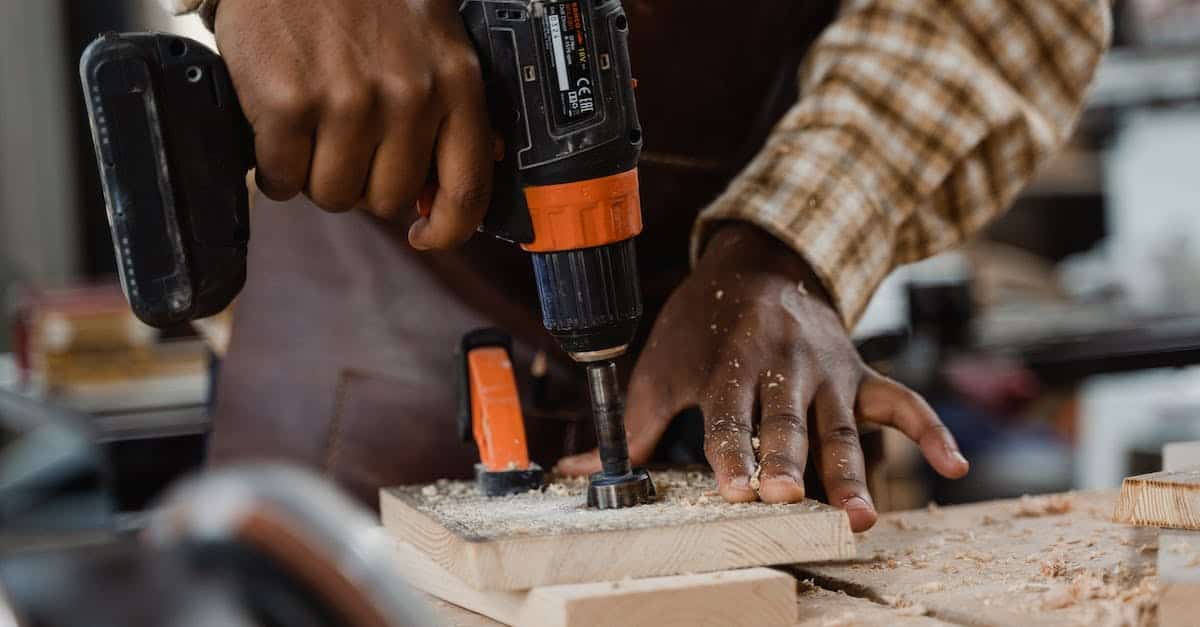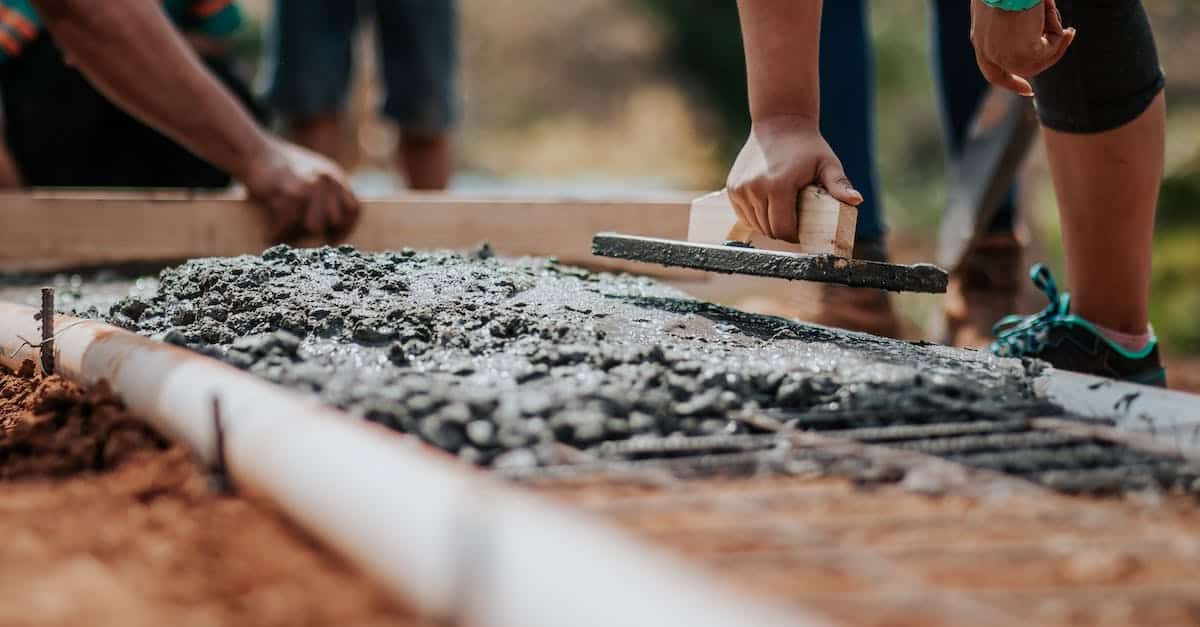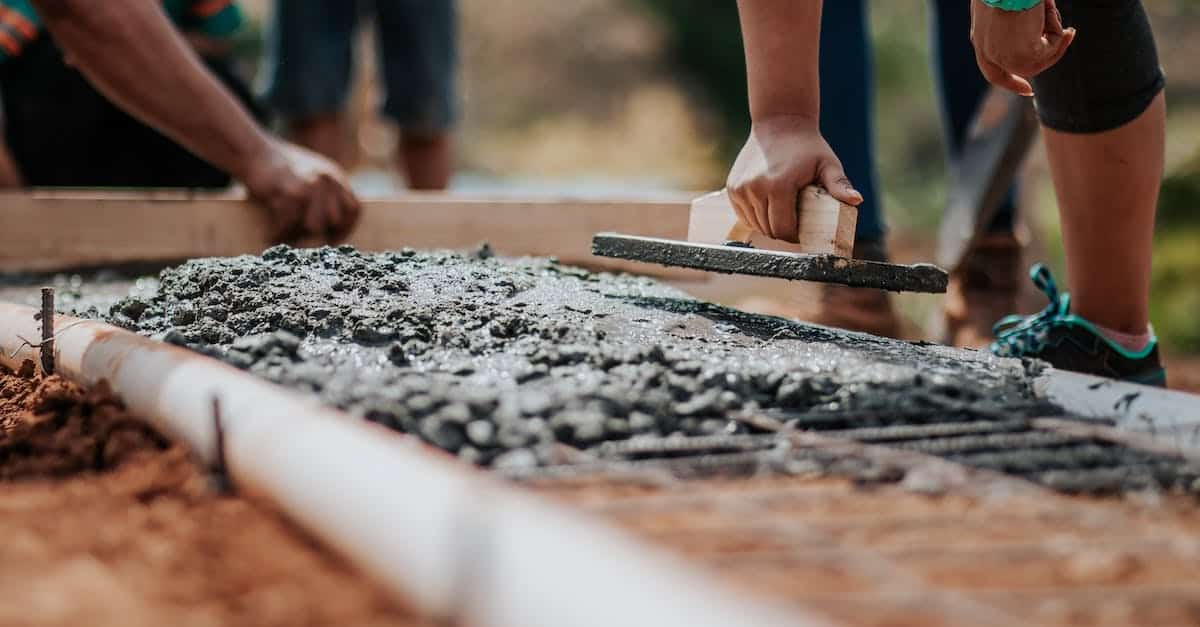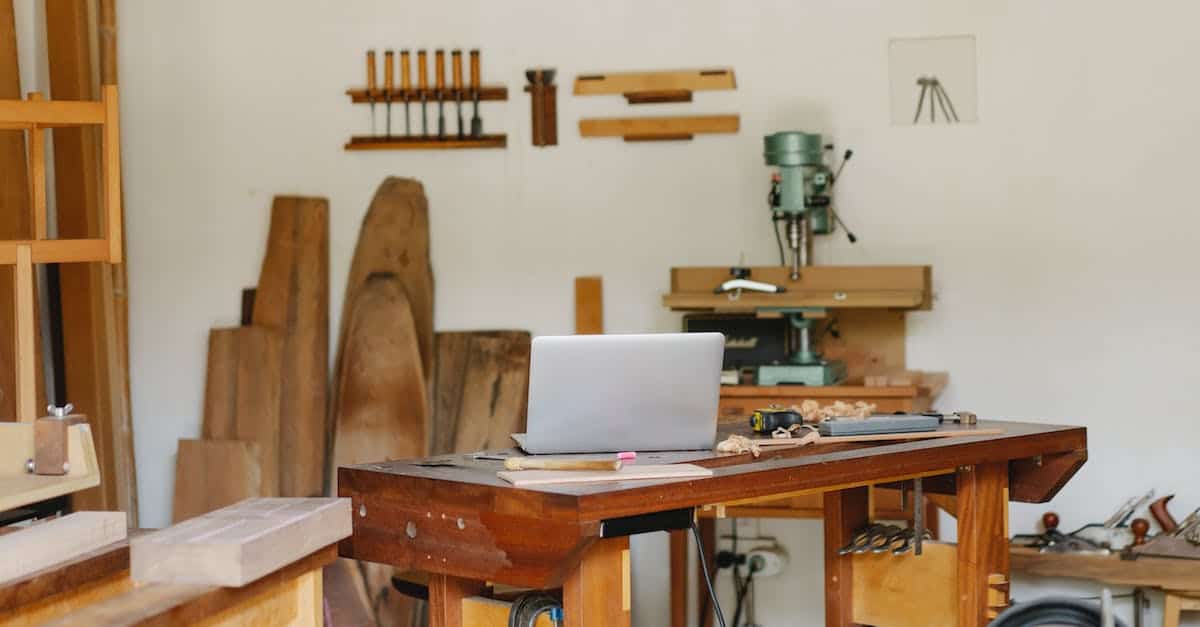Choosing the right wood for your desk is like picking the perfect ally for your productivity battles. You want something strong, stylish, and capable of handling whatever your workday throws at it. From the timeless charm of oak to the modern allure of bamboo, each type of wood has its own unique strengths and character.
In this article, we’ll dive into the world of woods to help you find the best match for your workspace. Whether you’re a DIY enthusiast ready to build your own desk or simply in the market for a new one, knowing your maples from your mahoganies is key. Get ready to discover the perfect wood that not only stands the test of time but also elevates your work area to the next level.
Benefits of Choosing the Right Wood for Your Desk
Picking out the perfect wood for your desk is more than just an aesthetic choice—it’s about guaranteeing functionality and durability. When you choose the right wood, you’re investing in a workspace that’ll stand the test of time. Imagine settling into your daily tasks with a desk that resists scratches and offers a smooth, polished surface for effortless writing and computer work.

Durability to Last a Lifetime
Hardwoods like oak and maple bring the promise of longevity. Their dense grain patterns and innate strength mean they can endure the daily grind. You won’t have to worry about replacing your trusty desk a few years down the line because it’s become wobbly or has succumbed to wear and tear. It’s a one-time investment that pays off year after year.
Unique Character for Your Workspace
Each wood species adds its unique flair to your office. Whether it’s the rich, warm tones of cherry wood or the bright, modern look of bamboo, your desk can be the centerpiece that reflects your personal style. It’s not just about looks though; the natural grain and texture of wood can’t be replicated, giving your workspace a one-of-a-kind feel.
Eco-Friendly and Sustainable Options
For those conscious about their environmental impact, choosing sustainable woods like bamboo or reclaimed lumber is a responsible move. Not only are you getting materials that are less taxing on the planet, but you’re also selecting woods with stories—each plank potentially carrying history from its previous life.
Remember, the right wood will also impact your work atmosphere. The warmth and natural beauty of a solid wood desk can improve mood and increase productivity. It’s about creating an environment where you love to work, and a well-chosen wood desk can make that difference. Take your time, weigh your options, and choose a wood that meets your functional needs, aligns with your environmental ethos, and most importantly, feels right for you.
Factors to Consider When Choosing the Best Wood
When you’re on the hunt for the perfect wood to craft your desk, there are a handful of key factors you’ve got to weigh in. Your decision will impact not just the aesthetic appeal but also the desk’s structural integrity and longevity. Let’s dive into what you need to consider.
Desk Usage and Load will heavily influence your choice. Are you planning a simple writing surface or will it bear the weight of multiple monitors and hefty equipment? Denser hardwoods like oak and maple stand up to pressure and resist wear, making them ideal for heavy-duty desks. On the flip side, if it’s light use you’re after, a softer wood like pine might just do the trick.
Consider the Work Environment. The climate in your workspace matters — fluctuating humidity levels can wreak havoc on some woods. Woods with stable grain patterns, such as teak, generally offer greater resistance to warping and cracking. Your desk should be tough enough to handle the mood swings of Mother Nature.
Don’t forget about the Finish and Maintenance. Some woods take to stains and finishes like a fish to water, offering you the chance to customize your desk’s look to match your style. Think about the maintenance, though. A desk that needs frequent oiling or waxing might not be your cup of tea if you’re not keen on regular upkeep.
Here are a few hardwoods renowned for their finish-friendliness:
- Cherry
- Walnut
- Mahogany
These species not only accept a wide range of finishes, but they also develop a rich patina that grows more lustrous with age.
Lastly, ponder the Cost and Availability of your wood choice. Exotic woods can offer unmatched beauty and character but often come with a higher price tag and may be harder to source. More common domestic woods might offer a balance between cost and functionality that’s just right for your budget. Whatever you decide, make sure it’s a wood that meets your practical needs and makes your heart sing every time you sit down to work.
Oak: The Timeless Charm and Strength
When you’re poring over wood choices for that perfect desk, you can’t overlook the allure of oak. Not just any wood gets lauded for its mix of beauty and brawn, but oak has earned its place in the pantheon of woodworking marvels. Oak’s dense grain not only offers a visual feast with its deep, rich patterns but it’s tough enough to handle whatever you throw at it.
Picture your desk taking on life’s daily dramas—a spill from your morning coffee, the accidental knocks as you shuffle papers, or the constant pressure from a stack of heavy books. Oak stands up to the rigors of daily use without much fuss. It’s like that old friend who’s unshakeable, no matter what’s going on around them.
And let’s talk craftsmanship. If joining, carving, or shaping gets your heart racing, then oak’s the one for you. It’s a dream to work with, for novices and seasoned woodworkers alike. Whether you’re chiseling dovetail joints or routing out a sleek cable management trough, oak responds beautifully to your tools.
But it’s not just the practicality that makes oak a stand-out choice—it’s the legacy. There’s a reason why antiques are often crafted from this resilient timber. Oak desks carry a sense of timelessness, a piece of history in every ring of the wood. Your oak desk is more than a workspace; it’s a potential heirloom, whispering tales of durability and longevity.
Maintenance-wise, oak won’t have you pulling your hair out. A simple oil or wax can bring out its best, keeping the wood hydrated and helping to fend off scratches. Sure, a little more maintenance than some softer woods, but the payoff is a desk that gets better with age, rather than one that succumbs to it.
With all these attributes, there’s no wondering why oak is a popular choice for desks. It embodies a perfect blend of strength and classic beauty, promising to be a centerpiece in any room it graces. Remember, your desk is more than furniture—it’s a testament to your taste and the silent partner in your productivity. Choose a wood that reflects that significance.
Maple: The Versatile and Sturdy Option
When you’re scouring the market for the perfect desk material, you can’t overlook maple. Renowned for its toughness and resilience, maple is a superb choice that consistently meets the demands of an active workspace. Like oak, it has a dense grain, but with a lighter color that brings a refreshing brightness to any room.
Maple wood comes in a variety of species, each with its own unique qualities. The most sought after for desks is hard maple, commonly known as Sugar Maple. It’s not just for syrup; this wood type offers a fine, even texture that makes it a pleasure to work with. Its hardness is a key feature – it sits at an impressive 1,450 on the Janka hardness scale, ensuring your desk can handle almost anything you throw at it.
The benefits of choosing maple for your desk are clear:
- Consistency in Texture: Maple’s subtle grain provides a consistently smooth feel that’s ideal for desk surfaces.
- Light Color Palette: It’s perfect if you’re aiming for a brighter aesthetic or looking to paint or stain your desk.
- Durability: Its natural hardness serves as an inherent scratch and impact resistance.
When you’re selecting your maple, look for responsibly sourced lumber. Certified sustainable maple not only ensures the longevity of forests but also contributes to the environmental responsibility of your project. Plus, when treated properly, maple wood can retain its beauty for decades; although lighter than oak, it’s just as stout in enduring the test of time.
Treating your maple desk with tung or linseed oil can highlight the natural grain and provide a protective layer against daily wear and tear. If you prefer a more refined surface, a polyurethane finish will work wonders without compromising on the texture’s subtlety.
In your woodworking journey, versatility is your friend, and maple is as versatile as it gets. Whether you’re making a simple writing desk or a comprehensive workstation, maple adapts easily to your vision. It cuts cleanly, sands beautifully, and even lends itself well to detailed joinery. Working in your garage shop, you’ll appreciate how maple is not only strong but also forgiving to work with. Whether you’re a seasoned pro or just starting out, maple is a wood that won’t let you down.
Walnut: The Luxurious and Elegant Choice
When you’re eyeing a touch of sophistication for your workspace, walnut stands out as the wood of luxury. With its rich, chocolate brown hue, this hardwood brings an air of elegance and warmth to any desk design. It’s no secret that walnut has been synonymous with high-end furniture for centuries, and once you work with it, you’ll understand why.
Walnut’s distinct, straight grain paired with the occasional wave patterns offers a visual feast that can transform a simple desk into a statement piece. But it’s not just about looks; walnut is also respected for its strength and durability. This makes it an ideal choice for a desk that withstands the hustle and bustle of daily life while maintaining its charm.
- Durability: Thanks to its hard and dense nature, walnut withstands scratches and dents better than many softer woods.
- Color and Grain: Walnut varies from a lighter pale brown to a dark chocolate brown, often with purplish hues and darker streaks.
- Stability: Walnut is known for its dimensional stability, essential for a desk that sees a lot of use.
The best part? Walnut is incredibly workable despite its hardness, which means you can get creative with your desk’s design. From intricate carvings to sleek, modern lines, walnut is accommodating.
Working with walnut does come with a reminder to be responsible about your wood sources. As it’s in high demand for furniture, ensuring you’re buying from suppliers who practice sustainable forestry is crucial to help preserve this magnificent wood for future generations.
Finally, protecting your walnut desk is straightforward. A coat of Danish oil can enhance its color and figure, while a durable top finish, like polyurethane, will keep it safe from spills and stains. Regular maintenance, like dusting and immediate cleaning of spills, will let walnut’s natural beauty shine for years.
Finding a balance between aesthetics and functionality is key when choosing wood for a desk, and walnut fits the bill perfectly for those looking to invest in an heirloom-quality piece. Whether you’re crafting it yourself in your garage workshop or seeking out a professional’s touch, a walnut desk is sure to inspire and impress.
Bamboo: The Eco-Friendly and Modern Alternative
When you’re on the hunt for the perfect wood to craft your desk, you may lean towards traditional hardwoods, but don’t overlook bamboo. Despite not being a true wood—it’s technically a grass—bamboo has risen in popularity due to its sustainability and sleek, modern appearance.
As a rapidly renewable resource, bamboo can be harvested every three to five years, unlike the decades it takes for hardwood trees to mature. That’s an eco-friendly factor you can feel good about. Moreover, bamboo’s natural strength is comparable to many hardwoods so it’s more than capable of standing up to the wear and tear of daily use.
If you’re imagining a desk that looks like it’s made from the bamboo stalks you’d find in a tranquil garden, think again. Manufacturers have mastered the art of turning bamboo into sturdy, uniform planks that work wonderfully for desks. Let’s dive into the benefits:
- Durability: Bamboo is resistant to dents and scratches, which means your desk will maintain its neat appearance for years to come.
- Versatility: Whether you’re aiming for a minimalist design or a more elaborate setup, bamboo’s clean lines and smooth finish adapt to any style.
- Maintenance: Caring for a bamboo desk is a breeze. Just wipe it down with a damp cloth and use a mild cleaner. Regular dusting will keep it looking fresh and new.
When it comes to color options, bamboo offers a range of tones, from pale natural shades to darker, carbonized hues that come from a special heat treatment. This array of choices ensures your desk will not only be functional but also a statement piece that captures your personal aesthetic.
Sourcing bamboo is typically easier on your wallet compared to some hardwoods, and because it’s lighter in weight, you’ll find it a joy to work with if you’re building the desk yourself. Imagine the sense of achievement when you’re sitting behind your custom-made, eco-conscious bamboo desk—it’s a choice that’s both practical and aligned with forward-thinking environmental values.
Conclusion
You’ve explored the ins and outs of selecting the perfect wood for your desk, from the classic strength of oak to the warm tones of walnut. But don’t overlook bamboo, a choice that marries durability with eco-friendliness. It’s a smart pick for the environmentally savvy, offering a contemporary twist to your workspace. Remember, the right wood not only complements your style but also supports your work habits. So whether you lean towards the traditional or the sustainable, your ideal desk awaits. Happy crafting!
Frequently Asked Questions
What are the best types of wood for a desk?
The best types of wood for a desk include oak, maple, walnut, and bamboo. Each offers different benefits in terms of durability, aesthetics, and cost.
Why is bamboo considered a good choice for a desk?
Bamboo is an eco-friendly option that is naturally strong, durable, and versatile. It’s also easy to maintain, lighter in weight compared to traditional hardwoods, and offers a modern look.
Is bamboo more sustainable than other hardwoods?
Yes, bamboo is more sustainable than traditional hardwoods because it grows faster, reduces carbon dioxide, and can be harvested without harming the ecosystem.
How does the cost of bamboo compare to other woods?
Bamboo is generally more affordable than hardwoods like oak, maple, and walnut, making it a cost-effective choice for furniture.
Can bamboo desks match different styles and colors?
Absolutely, bamboo desks come in a variety of colors and styles, easily complementing many décor themes with its range of natural to more processed finishes.
















